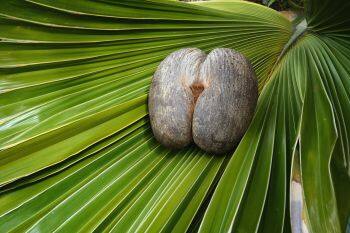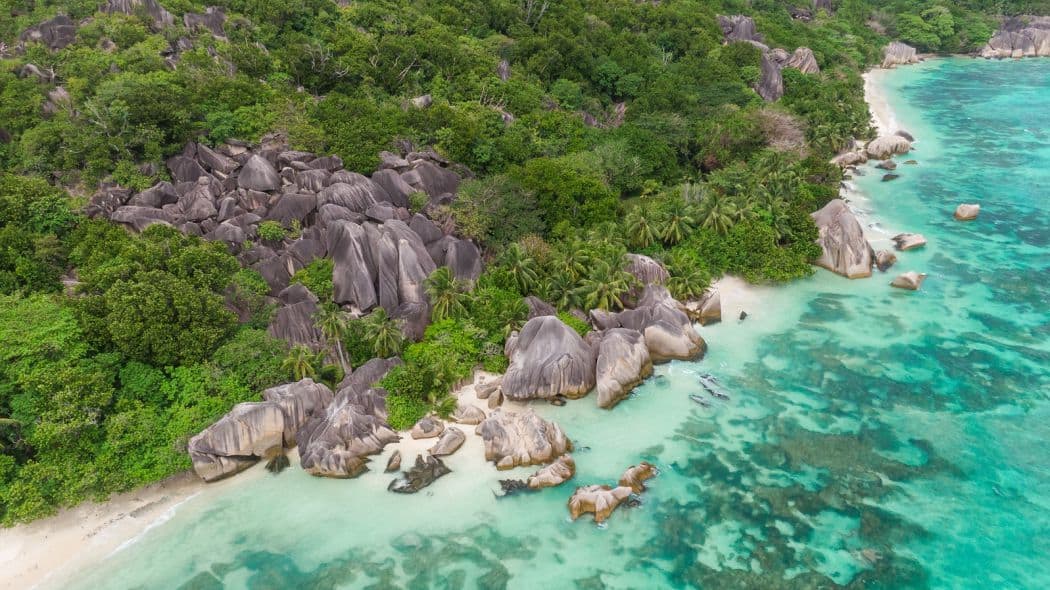The Aldabra Giant Tortoise on Curieuse Island, Seychelles. (Photo: Chris Close)
Do not worry about your vaccination status. Pack linen, straw hat, flip-flops, a bucket of sunscreen, an RT-PCR negative report and head to the Seychelles, an archipelago of 115 granite and coralline islands that has just opened its doors to international tourists.
Too many islands?
Ignore the count, because only four are inhabited (Mahe, Praslin, La Digue and Silhouette).
You could hike, dive, eat a fruit bat, dip your toes in silken sand, gape at the world’s largest species of coconut - and tortoise. And hear stories about Marie Antoinette (last queen of France) escaping the guillotine and shacking in a Seychelles island. Of writer Ian Fleming waiting for the muse to write the Bond adventure For Your Eyes Only. Of Prince William and Kate Middleton picking a Robinson Crusoe-type island for their honeymoon. So many stories, so many to-do things on an island that – if you believe the myth – was the Garden of Eden.
Here’s a quick look at must-see, must-do, must-eat in Seychelles:
The world’s smallest capital: Nothing screams small is beautiful better than Victoria, the capital of Seychelles. The Guinness Book of World Records vouches for it – Victoria is the world’s smallest capital. So small you could walk it in 10 minutes and been-there-seen-it-all in another 15. An old church stands as a reminder of the colonial era, a Hindu temple painted bright shimmers by the arcade, and the weekly market buzzes with hawkers and buyers. The crown jewel of the central roundabout is the Big Ben. The Little Big Ben, actually. A tiny silver replica of London’s Vauxhall Clock Tower that was erected to mark Seychelles’ new status as the Crown Colony. This Big Ben is small but do not call it Little Ben. It has a proper name: I’Horloge (literally, painted silver).
La Digue: With a population of 1,500, La Digue seems to be sitting on another planet. For long, cars were not allowed on the island. Rent a bicycle and pedal around. Laze on white beaches and gape at rocks carved exquisitely by lashing waves over millions of years. Anse Source d’Argent on La Digue is said to be the most photographed beach in the world. Spare half a day for Aldabra Atoll, a UNESCO World Heritage Site, to get up close with the Aldabra Giant Tortoises that can live for centuries. Do not miss L’Union Estate, a former coconut and vanilla plantation that offers a peep into the island’s colonial history.
Praslin Island: If legends are to be believed, Vallée De Mai, a UNESCO World Heritage Site in Praslin, was the original site of the Garden of Eden. Not many talk of Adam and Eve, though. All chatter is around Coco de Mer, an
 Female Coco De Mer nut. (Photo: Gerald Larose)
Female Coco De Mer nut. (Photo: Gerald Larose)
Tip: Take Cat Cocos Ferry from Mahe to Praslin and Praslin to La Digue. Operational twice daily every Monday, Tuesday, Wednesday and Friday; once on Sunday. Do not think of bringing home the Coco de Mer - it is strictly prohibited.
Fruit bats and shark chutney: Pwason Sale (salt fish) chutney with green mango; grilled red snapper basted with garlic and ginger; red lentil stew; snake gourd curry; breadfruit or cassava chips or daube, a sweet/salty staple soup. In Seychelles, Creole meals meld local flavours with French flair. But wait, you have not heard of the unusual lunch delicacy: the fruit bat. That’s what Sunday are for - the bat meal. Fruit bats are dressed, diced, marinated overnight in garlic, ginger, cloves, cinnamon and vinegar, then sautéed and slathered with tamarind juice. Four bats are enough for a hearty meal for three people! If bats are not enough to fill a plate, there’s satini reken. That is, shark chutney. Skinned, boiled shark meat finely mashed and cooked in lime and bilimbi juice and garnished with fried onions.
Vanilla tour and treat: You cannot come away from Seychelles without hearing its vanilla story, a pod that turned the fate of the African island and its people. In 1877, the archipelago exported the first batch of vanilla for a puny 1,195 Seychelles Rupees. Almost 60 kilograms of cured vanilla derived from 48,000 green pods! Today, vanilla is an economy and culinary essential. Visit a vanilla plantation; dig a spoon into Ladob (made of sweet potato and plantain boiled in coconut milk, nutmeg, sugar and vanilla) and Carotte Bananas (bananas wrapped in banana leaves with honey and vanilla).
 Anse Source d'Argent, La Digue. (Photo: Michel Denousse)
Anse Source d'Argent, La Digue. (Photo: Michel Denousse)
Flight: Air Seychelles flies direct from Mumbai to Mahe on Thursdays and Sundays; Mahe-Mumbai flight on Wednesdays and Saturdays. Other airlines offer one-stop flights to Mahe. Per person Air Seychelles Economy fares start from INR 31,578 while Business Class tariff is INR 66,836 upwards.
Covid guidelines:
• A negative PCR test taken 72 hours prior to departure is mandatory.
• No quarantine requirement nor restriction on movement upon entry into Seychelles.
• Tourists are required to complete the mandatory health authorisation on https://seychelles.govtas.com/
• A valid travel health insurance that covers COVID-19 related isolation, quarantine and clinical care in Seychelles is mandatory.
• Accommodation, recreational activities such as tours, excursions, sightseeing bookings can be made only at licensed establishments certified by the Public Health Authority listed on www.tourism.gov.sc.
• The minimum stay in establishments upon arrival is no longer applicable.
• Visa: Visa on arrival. No fee.• Currency: 1 Seychellois Rupee = INR 5.36